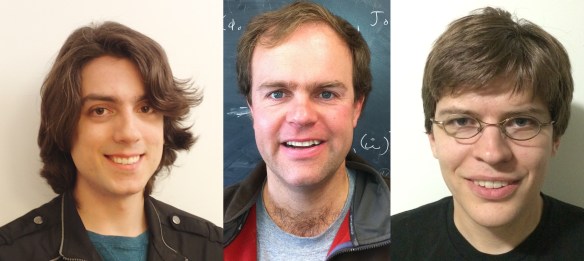
Sebastian Fischetti (left) is a graduate student of Professor Don Marolf (middle) at UCSB. Aron Wall (right) is a member of the School of Natural Sciences at the Institute for Advanced Study.
One of the most useful features of gauge/gravity duality is that it converts difficult problems in certain types of gauge theories into (relatively) simple geometric problems in gravity in one higher dimension. For example, the Hubeny-Rangamani-Takayagani (HRT) conjecture says that Continue reading







You must be logged in to post a comment.